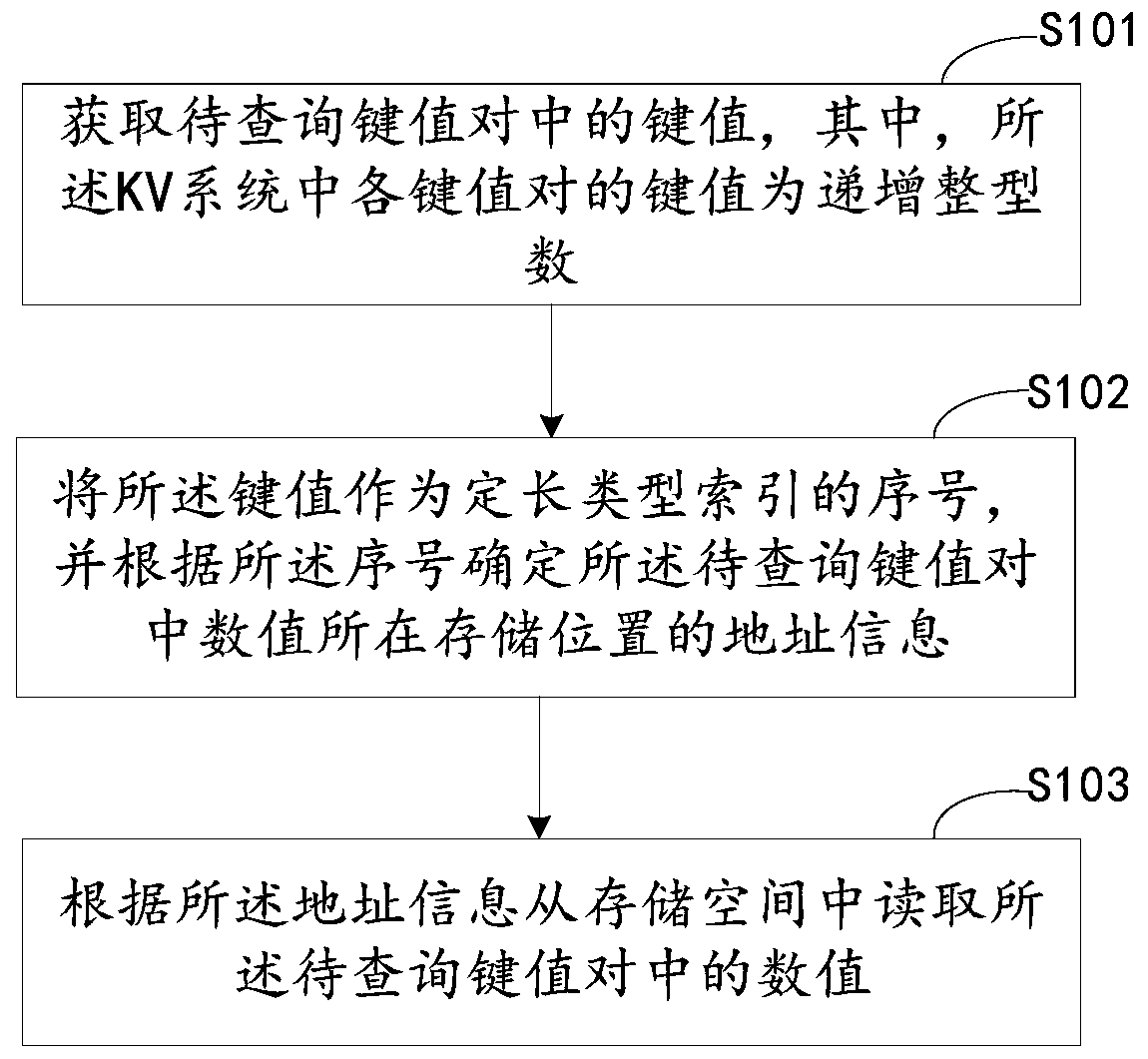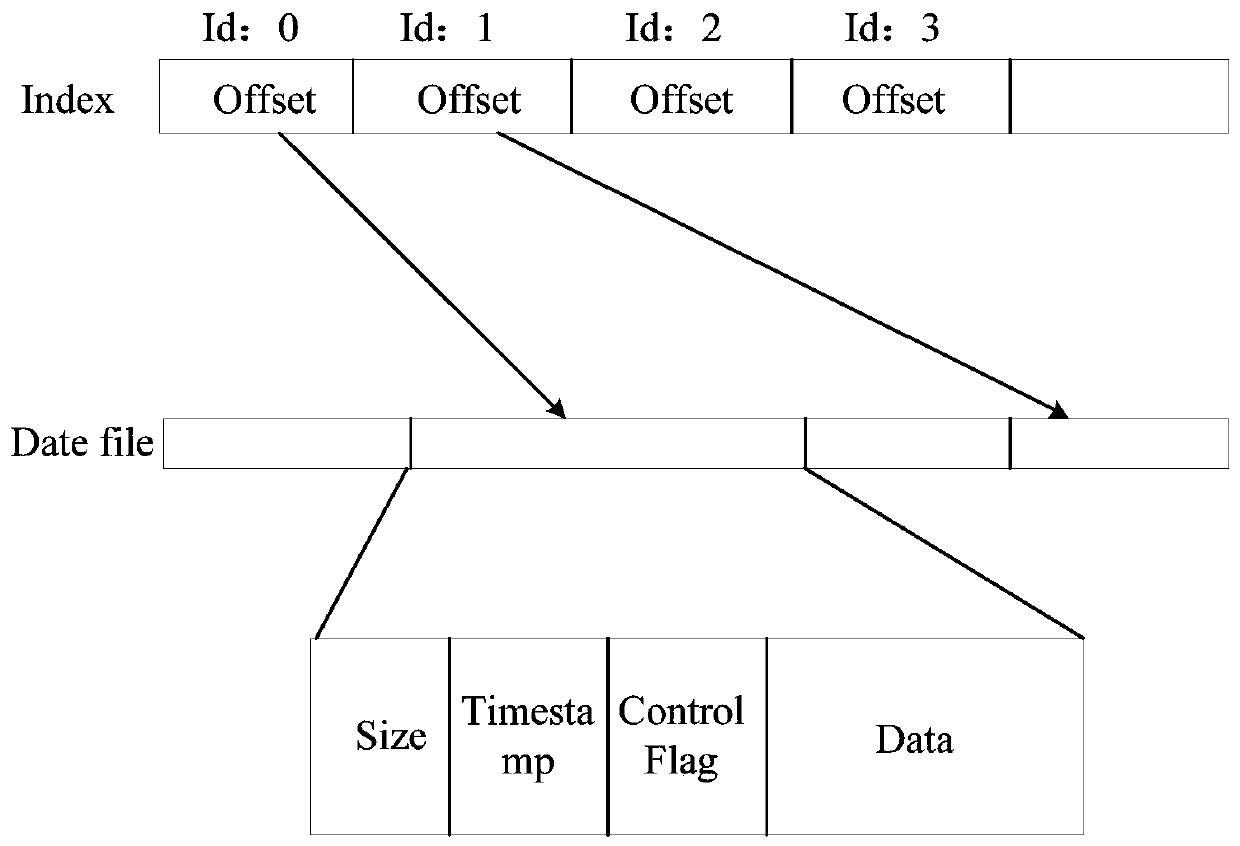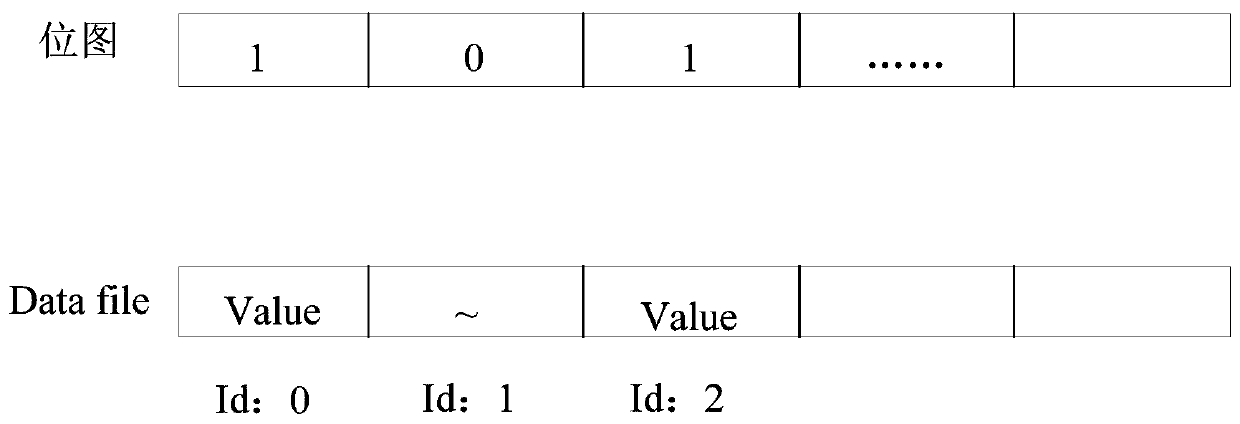Indexing method and device based on key value pair KV system, electronic equipment and medium
A key-value pair and index technology, applied in the computer field, can solve problems such as low index efficiency, and achieve the effect of improving reading speed, improving reading efficiency, and saving memory resources
- Summary
- Abstract
- Description
- Claims
- Application Information
AI Technical Summary
Problems solved by technology
Method used
Image
Examples
Embodiment 1
[0065] Figure 1A It is a schematic flowchart of an indexing method based on a key-value pair KV system provided in Embodiment 1 of the present application. This embodiment is applicable to the situation where the KV system is used to query the corresponding value through the key value, and can be executed by the indexing device based on the KV system provided in the embodiment of the present application, and the device can be implemented by software and / or hardware. Such as Figure 1A As shown, the method may include:
[0066] S101. Obtain the key value in the key-value pair to be queried, wherein the key value of each key-value pair in the KV system is an incremental integer number.
[0067] Among them, the key-value pair is composed of the key value Key and the value Value, which is used to represent the correspondence between the value and the key value. A key value can correspond to one value or multiple values. For example, if the key value is "age", its The correspondi...
Embodiment 2
[0109] Figure 2A It is a schematic flowchart of an indexing method based on a key-value pair KV system provided in Embodiment 2 of the present application. This embodiment provides a specific implementation method for the above-mentioned embodiments. This specific implementation method is suitable for solving the problem in the prior art that when the amount of data is too large, the use of the first-level index leads to excessive memory usage, such as Figure 2A As shown, the method may include:
[0110] S201. Obtain the key value in the key-value pair to be queried, wherein the key value of each key-value pair in the KV system is an incremental integer number.
[0111] S202. Use the key value as the primary index serial number, and determine the secondary index serial number of the index block corresponding to the serial number range of the primary index serial number, wherein each index block corresponds to a set number of primary index serial numbers.
[0112] Exemplary...
Embodiment 3
[0126] Figure 3A It is a schematic flowchart of an indexing method based on a key-value pair KV system provided in Embodiment 3 of the present application. This embodiment provides a specific implementation for the above embodiments. This embodiment is applicable to the situation of reading the value in the key-value pair to be queried when the value is of the POD type, such as Figure 3A As shown, the method may include:
[0127] S301. Obtain the key value in the key-value pair to be queried, wherein the key value of each key-value pair in the KV system is an incremental integer number.
[0128] S302. Use the key value as the primary index serial number, and determine the secondary index serial number of the index block corresponding to the serial number range of the primary index serial number, wherein each index block corresponds to a set number of primary index serial numbers.
[0129] Specifically, in this embodiment, the index block corresponds to the element space of t...
PUM
 Login to View More
Login to View More Abstract
Description
Claims
Application Information
 Login to View More
Login to View More - R&D
- Intellectual Property
- Life Sciences
- Materials
- Tech Scout
- Unparalleled Data Quality
- Higher Quality Content
- 60% Fewer Hallucinations
Browse by: Latest US Patents, China's latest patents, Technical Efficacy Thesaurus, Application Domain, Technology Topic, Popular Technical Reports.
© 2025 PatSnap. All rights reserved.Legal|Privacy policy|Modern Slavery Act Transparency Statement|Sitemap|About US| Contact US: help@patsnap.com



